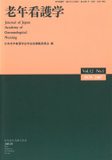Japanese
English
- 販売していません
- Abstract 文献概要
- 参考文献 Reference
本研究は,誤嚥性肺炎の予防が必要な要介護者に対する訪問看護師の支援を明らかにすることを目的とした.対象者は,訪問看護ステーションに働く13名の看護師である.研究方法は,誤嚥性肺炎の予防が必要な要介護者への看護実践に関して半構造化面接をし,グラウンデッド・セオリー・アプローチを参考に質的に分析した.その結果,訪問看護師の支援は,《肺炎発症リスクの管理》《望む生活の最大化》《予防ケアの継続》を統合した支援であった.すなわち,看護師は,《肺炎発症リスクを細心に管理する》ことを土台にし,同時に,《要介護者が望む生活を最大化する》ことをしつつ,《予防ケアを簡便化し継続性を高める》よう《最適な支援方法を探し出す》支援を行っていた.効果的な予防支援のためには,支援の柔軟性と肺炎発症リスクの的確なアセスメントの重要性が示唆された.
The purpose of this study was to explore home care nursing intervention for clients requiring prevention of aspiration pneumonia. Data were collected through semi-structured interviews by 13 home care nurses and analyzed referring to the Grounded Theory Approach. The core intervention of home care nursing was to provide integrated care for control of the risk of aspiration pneumonia, the life clients wish to lead, and continuance of preventive care. To achieve this core intervention, nurses provided 4 types of intervention: 1) To control the risk of aspiration pneumonia, nurses always judged the risk of pneumonia from clients' physical conditions, lifestyle and family caregivers' ability to care. Depending on these conditions, nurses helped clients to improve their physical function or compensated for the lack of caregivers' ability. 2) Nurses helped clients lead the most fulfilling lives. 3) Nurses promoted convenience and efficiency in various preventive cares that clients need. This led caregivers and nurses to provide preventive care more easily and continue it longer. 4) Nurses tried to find the most practical methods to achieve the above-stated 3 types of intervention. This can be accomplished by evaluating the effectiveness of care and accurately judging the risk of pneumonia.
In conclusion, for clients requiring prevention of aspiration pneumonia, home care nurses simultaneously controlled the risk of pneumonia, helped clients lead fulfilling lives and promoted convenience and efficiency in preventive care by finding the most practical methods to provide care.
Copyright © 2007, Japan Academy of Gerontological Nursing All rights reserved.


